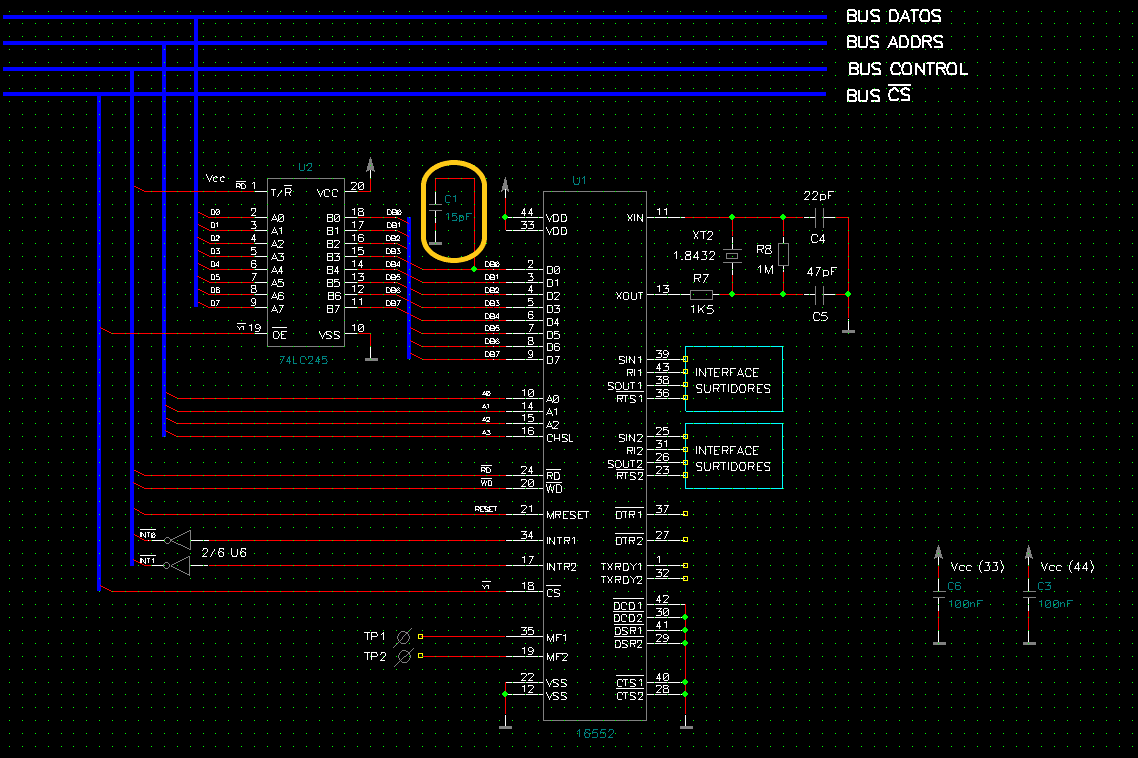Other Parts Discussed in Thread: TL16C450
Hi,
Recently we have change the DUART PC16552 of national to TL16c2552, Without code changes TL16c2252 seems work good, but one month ago we are starting with a problem that we don't understand.
After a frame sended, when we acces to read BRB in the first byte recieved, the data bus not works properly.
This is a capture with this problem:
Red -> CS
Yellow & green -> D2 & D3 (but this occurs with all bus)
On second byte of same frame and the rest works good.
What could be wrong?
We work on TL16C450 mode and after we recieve INT, we acces to LSR and when DR is 1 we read the BRB.
Thanks!


